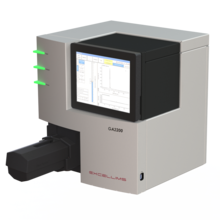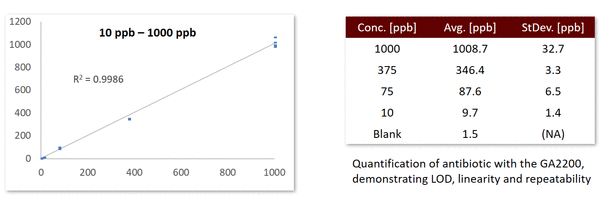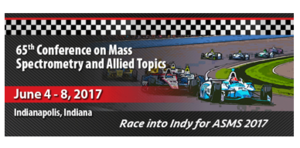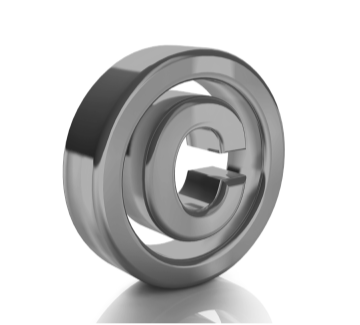Excellims’ High-Performance Ion Mobility Spectrometer (HPIMS) Wins TASIA 2020
HPIMS for process analytical technology (PAT) designated one of top three technologies driving progress in measurement science
ACTON, Mass. December 21, 2020 -- Excellims Corporation (Excellims), a leading provider of high performance ion mobility spectrometers (HPIMS) / mass spectrometry (MS), has won The Analytical Scientist Innovation Award (TASIA) 2020. TASIAs showcase the technologies driving progress in measurement science.
The award recognizes that HPIMS brings the power of state-of-the-art Ion Mobility out of the lab: enabling high resolution and sensitive chemical detection at the point of need. Innovation comes in lots of shapes and sizes, but has little practical value if it can’t be applied. HPIMS makes the application of IMS easy and accessible. Currently, users must purchase a mass spec with integrated IMS, to get the known benefits of the latest developments in Ion Mobility technology. Along with high cost, traditional integrated instruments are tied to a lab bench. HPIMS brings the technique to the point of need, and into the hands of operators who need the highest quality chemical detection where it is needed most, at line.
“The potential of HPIMS is huge: low cost, high performance, agile chemical detection for everyone, everywhere”, comments Dr Ching Wu, Co-Founder and CEO of Excellims. “We are honored to receive this award which is testament to our heritage as an innovator of HPIMS, and the hard work our team has put into developing world class instruments that solve some of the known challenges with deploying IMS, such as cost and accessibility.”
Matthew Hallam (Editor of The Analytical Scientist) said, “Now in its eighth year, The Innovation
Awards continue to paint an exciting picture of the future – and the instruments and technologies that are likely to have an impact across analytical science. The Top Three innovations recognized are: high-performance ion mobility spectrometry for process
analytical technology from Excellims (third), an enhanced MALDI technique (second), and the industry’s first four-quadrupole ICP-MS system (first).This year’s final 15 reflect the full spectrum of analytical advances, from breakthroughs in imaging and mass spectrometry to handy tools to enhance our handling of data.”
Excillims offers three HPIMS-based instruments: The first, the GA2200, provides IMS-based chemical detection at the point of need, in minutes, rather than the days associated with lab-based techniques. Particularly suited for applications such as cleaning validation on pharmaceutical production lines, the GA2200 is the only standalone HPIMS designed for the GMP environment. The second is a rugged, portable integrated HPIMS-mass spectrometer (MC3100), that brings two-dimensional chemical detection to address unmet field detection challenges. Finally, Excillims also enables ion mobility to be added to a lab for six figures, rather than seven using the MA3100, a HPIMS module that can be added to an existing mass spectrometer.
High-Quality Chemical Detection Where It Is Needed Most
In this interview with Technology Networks, Dr. Wu talks about the advantages HPIMS can offer in applications ranging from pharma PAT to clinical diagnostics, and discusses how Excellims is increasing accessibility to the technology.
Mass spectrometry allows up to one million times resolution
Medical News Observer: Precision Medicine and Mass Spectrometry
The silver lining of the COVID-19 pandemic was the renewed emphasis on new research opportunities in the pharmaceutical field. In this article, advances in mass spectrometry and its applications are reviewed.
High-performance ion mobility spectrometry is an efficient technique for cleaning validation
This article examines high-performance ion mobility spectrometry (HPIMS) as a technique for cleaning validation, comparing it with conventional alternatives. Experimental data illustrate the linearity, reproducibility, and detection limits of HPIMS for relevant compounds, which offers rapid, inexpensive, high sensitivity, at-line measurement for cleaning validation.
Ion Mobility Analysis for Bioprocess Monitoring
Tracking the components of a biotherapeutic during processing makes up a key area in search of innovation. One method uses ion mobility spectrometry (IMS). To find out more about this method, GEN spoke with an expert: Ching Wu, PhD, president and CEO at Excellims.
Delivering the Power of Ion Mobility Spectrometry - Mass Spectrometry to the Point of Analysis
Author: Ching Wu, Greg Brabeck, Mark Osgood, Eugenie Hainsworth on behalf of Excellims Corporation
With ion mobility (IM) built into many of the newer mass spectrometry (MS) systems, ion mobility spectrometry – mass spectrometry (IMS-MS) instrumentation has become the frontier of mass spectrometry development.
Frost & Sullivan Applauds the Exceptional Performance and Application Scope of Excellims’ Path-breaking Ion Mobility Spectrometry Solution
Frost and Sullivan awards high performance ion mobility spectrometry (HPIMS) from Excellims an 'Enabling Technology Leadership Award'
From explosive detection to routine analysis & biological research: The evolution of the ion mobility spectrometer
SelectScience interviews Excellims founder, Dr Ching Wu about the evolution of ion mobility spectrometry
2016 Global Ion Mobility Spectrometry Enabling Technology Leadership Award
Frost and Sullivan reviews why it awarded high performance ion mobility spectrometry (HPIMS) from Excellims an 'Enabling Technology Leadership Award'
Lab Bulletin TASIA Award
Excellims Corporation (Excellims), a leading provider of high performance ion mobility spectrometers (HPIMS) / mass spectrometry (MS), has won The Analytical Scientist Innovation Award (TASIA) 2020. TASIAs showcase the technologies driving progress in measurement science.
Select Science Editorial Sept 2020
Excellims founder and CEO, Dr. Ching Wu is a man on a mission. In this exclusive interview, we sit down with this pioneer of ion mobility spectrometry (IMS) technology, to find out more about the journey that took him from the security industry to the very frontline of scientific advancement.
New Video - Overview: Cleaning Validation By IMS
A NEW TYPE OF CLEANING VALIDATION ANALYZER
- 30 seconds per sample, swab extract or rinse sample
- Highly API specific and fully configurable
- Small enough to be used at line
- Easily operated in the field
- Fully 21 CFR part 11 compliant
See the GA2200 cleaning validation analyzer in operation:
To find out more, please click here for GA2200 product and applications information or contact our Sales & Applications team to schedule a demonstration:
GA2200 Update - Reliable & Compliant Cleaning Validation Results In 30 Seconds

Ion mobility offers high-speed, compound-specific detection with ppb-level sensitivity, making it very attractive for use in cleaning validation, where large numbers of samples need to be screened for API and detergents before production can continue.
Earlier implementations, however, required analytes to be volatile and thermally stable, gave only low analytical resolution or lacked 21 CFR part 11 compliant software, limiting the adoption of ion mobility for cleaning validation in pharmaceutical manufacturing.
The GA2200 overcomes all these limitations offering:
- A versatile ESI source, able to ionize non-volatile and thermally sensitive compounds in a variety of different solvents (swab extract and rinse samples)
- A high resolving atmospheric drift tube (R > 70), giving specific results for APIs and detergents in as little as 30 seconds per sample
- All features required for full 21 CFR part 11 compliance including restricted individual user access, permissions management by user level, protected sample and method files, electronic signatures and a comprehensive electronic audit trail
The GA2200 thus enables a tenfold or higher increase in speed over HPLC-based methods while maintaining high sensitivity, good linearity and excellent repeatability:

The GA2200 is built for industrial environments with a compact, rugged design, easy- to-use touch screen and user levels from routine operator to full analytical method configuration mode.
To find out more, please click here for GA2200 product and applications information. To schedule an instrument trial on your samples please contact our Sales and Applications team. We look forward to hearing from you!
ASMS 2018 - New Applications For Excellims IMS-MS
MEET US IN SAN DIEGO!
Interested in combining ion mobility with your Orbitrap or ion trap mass spectrometer? With the MA3100 you can add high resolution, plug & play IMS to your system in under 30 seconds! Applications include isomer separation (sugars, lipids, metabolites, vitamins), analysis of protein conformation states and peptide CCS, 2D characterization of complex mixtures, e.g. in petroleomics, and many more - please see below for a list of results presented at this AMS by our customers, collaboration partners and colleagues.
Intrigued? Please join us at booth 306 to take a look at the instrumentation and to discuss your application ideas or a potential instrument demonstration. We look forward to meeting with you!
|
Title |
Presenter |
Session |
|
Deducing Association Energies from Shifts in Arrival Time Distributions: Impact of Selective Gas-Phase Ion-Vapor Clustering |
Pearl Kwantwi-Barima, Washington State University, Pullman, WA |
TOH pm 03:10 |
|
Separation of Saccharide Isomers using High Performance Ion Mobility Spectrometry on an Orbitrap Mass Spectrometer |
Aurelio La Rotta, Excellims Corporation, Acton MA |
TP 429 |
|
Separation of Noncovalently-Labeled Disaccharide Isobars by Traveling Wave and Frequency-Modulated Drift Tube Ion Mobility-Mass Spectrometry |
Kristin McKenna, Georgia Institute of Technology, Atlanta GA |
TP 410 |
|
Evaluating the influence of ion mobility techniques on conformer interconversion for routine quantitation of 25-hydroxyvitamin D3 |
Nicholas Oranzi, University of Florida, Gainesville FL |
TP 430 |
|
Separation of Isomeric Metabolites Using High Performance Ion Mobility in Various Drift Gases on an Orbitrap Mass Spectrometer |
Julia Kaszycki Excellims Corporation, Acton MA |
WP 432 |
|
Chirality Induced Gas-Phase Acidity and Conformational Changes in Cysteine-Polyalanine Peptides |
Yuntao Zhang, University of the Pacific, Stockton CA |
ThP 279 |
|
Investigation of the Gas Phase Structure of Polyproline Helix through Acidity Measurement |
Yadwinder Mann, University of the Pacific, Stockton CA |
ThP 280 |
NEW VIDEO - How To Add Mobility To Your MS In Under 30 Seconds
What if your mass spectrometer could also provide information on a molecule's 3D size and shape? Adding a mobility stage does just that, enabling you to:
- Distinguish between isomers (e.g. oligosaccharides, lipids)
- Analyze the conformation states of large molecules like proteins
- Understand reaction pathways (charge location, molecular shape)
- Increase confidence in identification through m/z plus Collision Cross Section (CCS)
- ... and much more!
If the above sounds interesting, you might want to consider adding a mobility stage to your MS - it is as simple as swapping out ion sources:
Easy to install and use, an add-on ion mobility stage is also inexpensive, as you already have the mass spectrometer in place. Interested? Please check out the MA3100 product pages or contact an application specialist using the link below!
Excellims at ASMS 2017

Excellims to exhibit and present at 65th ASMS Conference on Mass Spectrometry and Allied Topics, June 4 - 8, 2017 Indianapolis, Indiana. Visit us at booth #404 to meet our scientists and learn more about the high performance ion mobility spectrometry (HPIMS) products and the add-on HPIMS module for Thermo ScientificTM Orbitrap and other mass spectrometers.
Massachusetts Life Sciences Center Board Approves Accelerator Loan For Excellims
The Massachusetts Life Sciences Center (MLSC), the agency charged with implementing the state’s 10-year, $1-billion Life Sciences Initiative, today announced the awarding of a $980,000 Accelerator Program loan to Excellims Corporation, an early-stage life sciences company based in Acton, MA.



